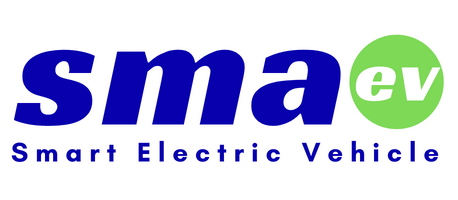In 2024, the electric vehicle (EV) market is poised for consistent expansion. According to MarketsandMarkets 1, the global EV market is valued at US$388.1 billion in 2023 and is projected to reach US$951.9 billion by 2030, exhibiting a Compound Annual Growth Rate (CAGR) of 13.7%. This year marks a significant milestone, with 25% of all passenger vehicle registrations globally being electric, as indicated by Euromonitor’s Mobility forecast2 for 2024, forecasting global EV sales to surpass 17 million units.
S&P Global Mobility anticipates ongoing growth in the passenger car market, with EVs comprising 16.2% of global passenger vehicle sales in 2024. The most substantial growth is expected in Europe and North America, with the United States projected to experience a growth rate of 66.4%, followed by Central and Western Europe.
| BEV Share Estimates, 2024 | BEV Share Estimate in Region | YoY Change (2024 vs. 2023) |
| Europe (Central/Western) | 22.2% | +41% |
| US | 13.2% | +66.4% |
| China | 28.6% | +28% |
| India | 4.1% | +39% |
| Global | 16.2% | +39.5% |
Source: S&P Global Mobility, BEV share estimates, December 2023
Dominance of Mid-Range and Hybrid Electric Vehicles
In the upcoming year, mid-range EVs and plug-in hybrid EVs (PHEVs) are poised to dominate the market. Studies conducted by MarketsandMarkets emphasize that mid-range electric vehicles, falling within the price range of $30,000 to $45,000, will command the largest market share. Notably, both established automakers and emerging players strategically introduce mid-range models, contributing to this trend.
Market research firms highlight PHEVs as the forefront segment, propelled by several factors. These include the alternative effect spurred by the increase in fuel costs, the growing consumer awareness of energy conservation, and the stringent global emission regulations compelling the purchase of energy-efficient vehicles.
Affordable Electric Vehicles with Cost-Effective Batteries
As 40% of the electric vehicle cost depends on the battery, offering consumers affordable electric vehicle batteries can transform electric vehicles from exclusive high-priced items to more widely available options. There are some other initiatives to accelerate penetration such as battery subscription services and battery swapping models, helping reduce the burden of purchasing vehicles. Anticipate the launch of cheaper EV batteries in 2024, assisting automakers in continuous price reduction to stimulate broader consumer adoption.
Breakthroughs in electric vehicle battery technology and large-scale production have already reduced battery prices from $1,200 per kilowatt-hour (kWh) in 2010 to $160 per kWh in 2023. It is expected that by 2030, prices will further decrease to approximately $60 per kWh. MarketsandMarkts indicated, “We can expect EVs to get cheaper than some ICE vehicles from 2025, enhancing consumer affordability and making electric vehicles competitive with traditional vehicles.”
The reduction of battery costs is anticipated through advancements in new technologies and chemical formulations. This includes exploring innovative anode compositions, utilizing more cost-effective materials, and minimizing reliance on expensive metals like lithium, nickel, and cobalt. One illustrative approach is the adoption of iron phosphate (LFP) batteries. Additionally, there is ongoing discourse surrounding sodium-ion batteries, as manufacturers like BYD proactively establish extensive production facilities for sodium-ion batteries. The objective is to substitute the scarce and costly lithium element with the more economical sodium alternative.
Global Infrastructure Boom with Optimized Charging Experience
As the availability of charging infrastructure continues to be a critical concern for the widespread adoption of electric vehicles (EVs), both governments and industries are actively investing in ultra-fast charging stations. This strategic investment aims to foster market development and alleviate EV range anxiety. According to research from S&P Global Mobility 3, the global landscape has witnessed a substantial surge in the number of AC and DC chargers, escalating from 3 million in 2019 to over 15 million worldwide in 2023. Projections indicate a further increase to 70 million by 2030.
Tesla, with its extensive supercharger network exceeding 50,000 stations worldwide, plays a crucial role in easing consumer concerns. Notably, major automotive manufacturers such as Ford, General Motors, Honda, and Nissan have announced their adoption of Tesla’s North American Charging Standard (NACS) charging specifications. This move is aimed at bolstering infrastructure reliability and tackling challenges associated with slow charging. The ongoing standardization of charging specifications remains a focal point for future developments.
Moreover, wide-bandgap (WBG) semiconductor materials such as Gallium Nitride (GaN) and Silicon Carbide (SiC) are gaining widespread attention for providing faster charging, longer driving ranges, and lower costs. These technological advancements are pivotal in shaping the future landscape of EV charging infrastructure.
Beyond speed, the charging experience is vital for vehicle owners. Looking ahead to 2024, advancements in EV charging technology, especially in software, will redefine the customer experience. Emerging trends include the integration of contactless payment and e-roaming capabilities, simplifying access and payment for EV drivers. However, challenges persist, such as ensuring cross-network interoperability, seamless payment processes, transparent expected charging times, and widespread access to fast charging.
Then there’s the cost of EV charging itself. Home charging will always be a convenient and smart option, allowing drivers to take advantage of off-peak hours and lower energy costs. Additionally, providing charging facilities becomes a selling point for businesses, encouraging customers to return or stay longer on-site, and avoiding a negative charging experience caused by factors such as limited availability or lack of payment options.
Reference:
1: https://www.marketsandmarkets.com/Market-Reports/electric-vehicle-market-209371461.html
2: https://www.euromonitor.com/article/top-three-electric-vehicle-industry-predictions-for-2024 3: https://www.spglobal.com/mobility/en/research-analysis/2024-ev-forecast-the-supply-chain-charging-network-and-battery.html





